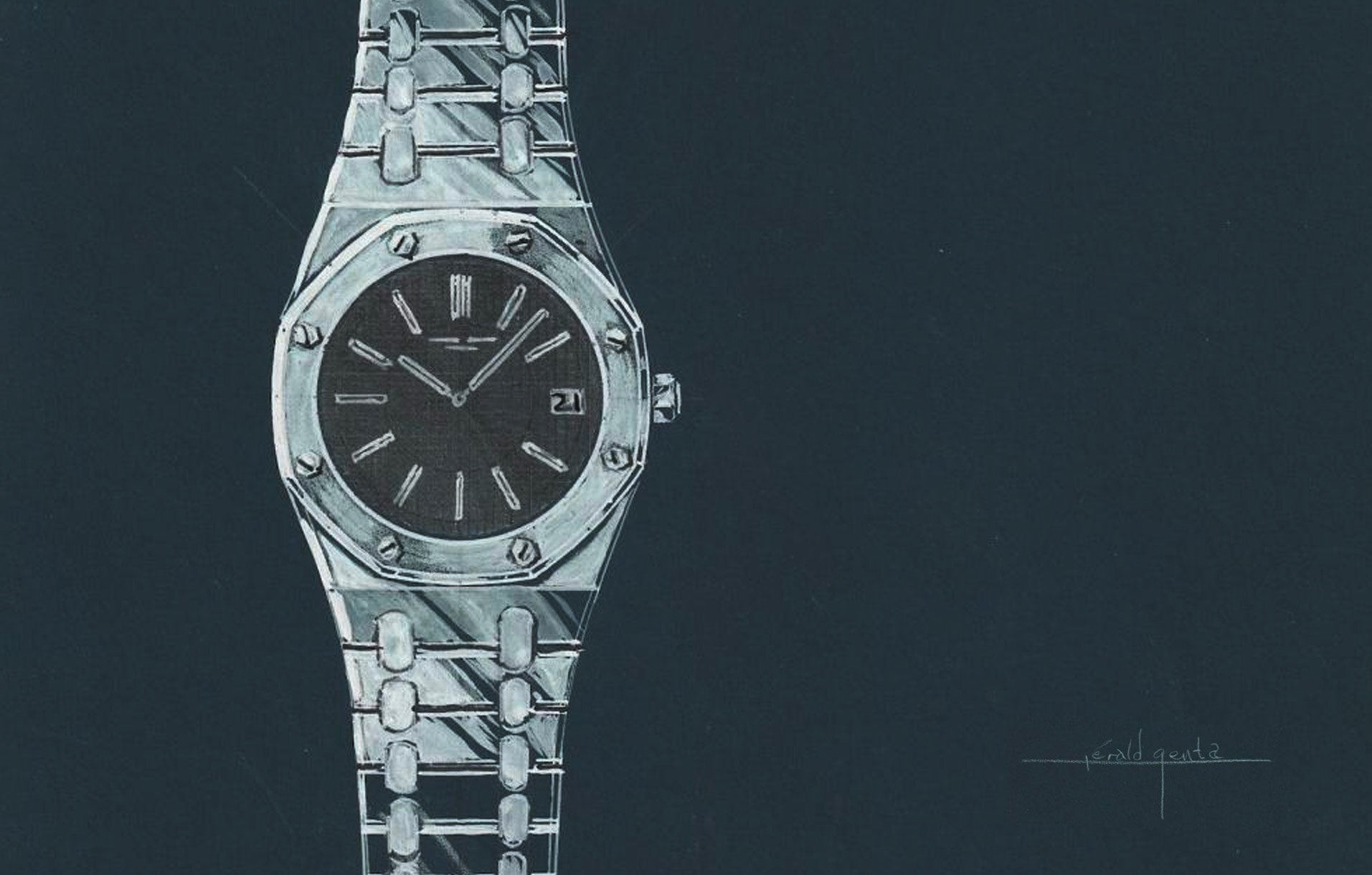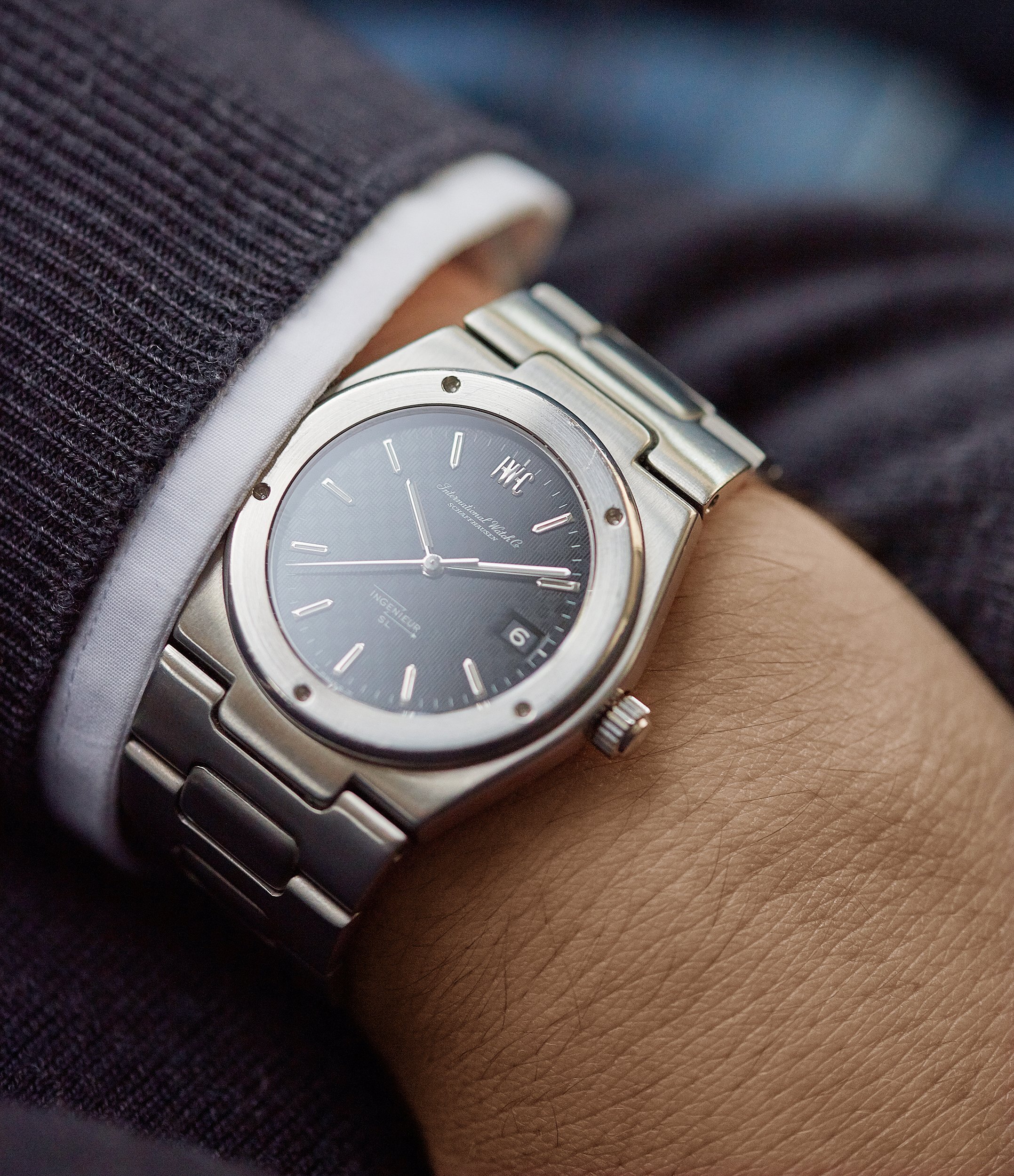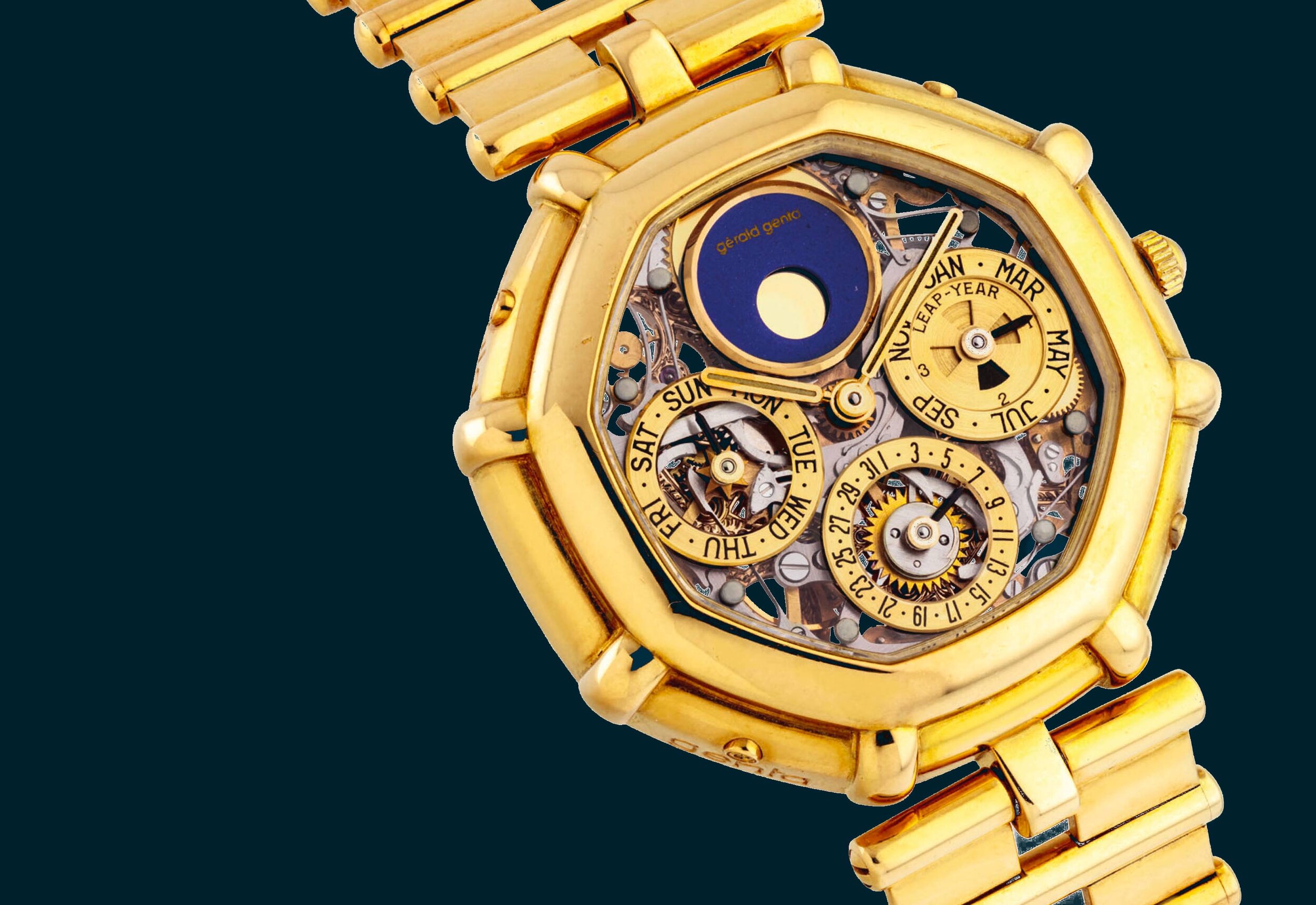

The masterpieces that changed fine watchmaking forever
The Polerouter
Designed in 1954 by Genta at the age of 23, this is Gerald Genta’s first legendary contribution to watchmaking. The SAS Polerouter was commissioned by Universal to commemorate the historic flight from Copenhagen to Los Angeles via the North Pole. The first watches were given to the cabin crew of the Scandinavian Airlines Systems (SAS) upon landing in LAX.
The Constellation
In 1959, Omega asked Gerald Genta to review, refresh and renew their strategic Constellation range which was their flagship collection. It is thanks to the Maestro’s renewal of this range that the watchmaking company has been very well ranked for so many years. It was from the design of this piece that Gerald Genta began to be perceived as a “star designer”.
The Royal Oak
In 1970, the House of Audemars Piguet approached the designer for a watch that would become the brand’s most iconic piece: The Royal Oak. Inspired by a vintage diving helmet attached to the rest of the suit with screws, the model was sketched in one night only. He transferred the octagonal shape to the design of this piece, keeping the screws on the bezel. The Royal Oak was the first luxury sports watch to be made of steel. This was the first time in the history of modern watchmaking that this material was considered as a precious metal. The Royal Oak was revolutionary.
The story of the Royal Oak,
as told from Gerald himself.
One afternoon, at four o’clock, Mr. Georges Golay, the Managing Director of Audemars Piguet, rings me up and tells me: “Mr. Genta, I need a steel sports watch that has never been done before, I want it to be something totally new and waterproof.” On my part, I understood that what he was looking for was a brand-new waterproofing technology. “I want the design by tomorrow morning.” I designed it overnight and my idea was to replicate the system of the scaphander’s helmet on the watch case. With the eight screws and with the joint visible on the case’s exterior. So I was given the ‘green light’ straight away to begin work on the prototype. I completed the prototype myself within a year. In 1970, I designed the watch. And it took one more year before industrial production, which finally came about in 1972.
The Nautilus
Upon the request of Phillippe Patek in 1976, Gerald Genta designed an exceptional piece, still considered today as a benchmark. Similarly, to the Royal Oak, it too was inspired by the nautical world, but this time taken from the portholes of the transatlantic ships. The watch was named Nautilus in tribute to Captain Nemo’s submarine in Jules Verne’s novel “20,000 Leagues Under the Sea”. As the story goes, he sketched the watch in five minutes on a paper napkin in a restaurant. This new steel watch, with a soft-angled bezel, is the subtle balance between sport and elegance. It remained in production for 30 years.

The Ingenieur
Yet another example of luxury watch that could not have been created without the key contribution of Gerald Genta. Launched in 1976, the designer gave it a unique and incomparable touch of five screws on the bezel. Although its design has evolved since, Gerald Genta’s mark will always remain preeminent, even on the latest editions of the IWC Ingenieur. Equipped with an antimagnetic protection, this watch was intended for professionals working near magnetic fields, hence the name “Ingenieur” (meaning engineer).

The Bulgari-Bulgari
The design of the famous Bulgari-Bulgari bears its roots in the ancient Roman coin. From this, Gerald Genta designed a watch that would become an emblem for Bulgari, even impacting on the style of other brands. The purity and simplicity of this model translated into a huge success. The impact of Bulgari-Bulgari, initially Bulgari-Roma, was considerable.
The Gefica Safari
This watch was made in 1984 following a request from three safari hunters. The name of this piece comes from the aggregation of the first two letters of each of the hunter’s names (Geoffroy, Fissore et Canali), spelling GEFICA. This model designed in bronze, with moon phases and a compass, quickly became an icon in the world of watchmaking, eventually inspiring different versions. The revolutionary use of bronze for the covering solved the problem of hunting visibility as this material did not reflect the sunlight.

“In 1984, he once again snubbed tradition and convention with the first-ever watch with a bronze case. When Genta unleashed his creation, the Gefica Safari watch, it was scoffed at for using a material that looks aged and dull almost immediately. But that was the point. Bronze was chosen because it wouldn't reflect light and spook an animal, but it's easy to imagine that its color and texture also appealed to Genta as a designer. The warm earthy tones perhaps also evoked a dusty African landscape and the rugged nature of hunting.”
The Disney Collection
In the eighties, Gerald Genta obtained a license exclusively from the Walt Disney company to design limited edition watches, which incorporated iconic characters such as Mickey Mouse, Donald Duck or Minnie Mouse, confined to 18 carat gold and then steel casing. This range, entitled ‘Fantasy’, was defined by high-precision watch mechanisms.
The Pasha
Fifty years after the original piece was made by Louis Cartier for the Pasha of Marrakech’s swimming sessions and banquets, the Maestro reimagined the vintage men’s watch. Redesigned in 1985, he kept the watch characteristically Genta with a timepiece that embodied yet another perfect balance between luxury and sport.
Cartier had missioned Genta to recreate the watch with a new sporty edge, but also in keeping with the traditional elegance associated with the famous watch brand. The round watch face that Genta designed positively broke boundaries for Cartier, opening a new era of round-faced designs for them, but Gerald Genta kept key features of the brand, notably the Vendome lugs and blue sapphire.
The Octogonal
This octagonal cased wristwatch, created in 1991, bears a typical and very recognizable shape associated with the Gerald Genta brand. A skeleton dial indicating the moon phase at noon in a blue enamelled disc, the month on three o’clock, the date on six, and the day on nine. Perpetual calendar, minute repetition. A very original and recognizable bracelet.
The Retrograde
Gérald Genta develops a new way of reading time by associating two complications (jumping hour and retrograde minutes) in the same movement and on the same dial. This is a first in the history of watchmaking. This inventive model with the original dial is later to be enriched with many different versions.
The Grande Sonnerie
In 1995, after five years of research and development, Gérald Genta unveiled the Grande Sonnerie, the wristwatch considered to be the most sophisticated and complex in the world. This watch was a first in many ways, in particular it included more than a thousand spare parts. Minute repeater, Westminster four-hammer chime, perpetual calendar, dual power reserve display, this watch is a true masterpiece.
















